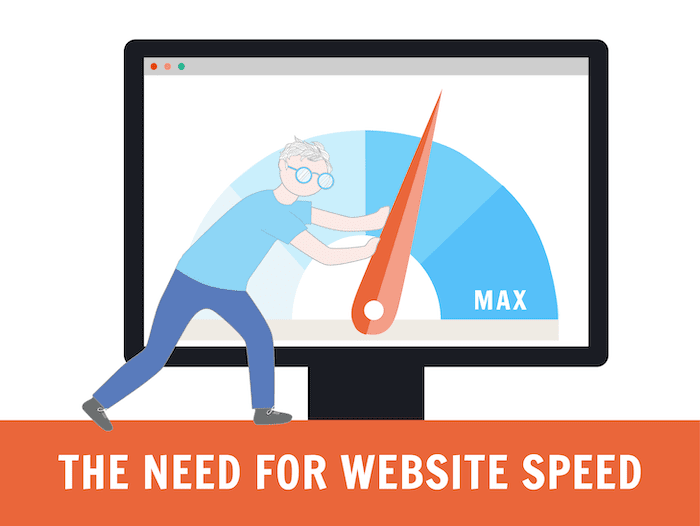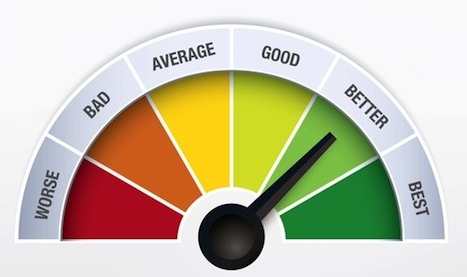10 easy ways to improve your blog's loading speed
Are you tired of waiting for your blog to load? Are you losing visitors because of slow loading speed? Fear not! There are 10 easy ways to improve your blog's loading speed and keep your visitors coming back for more.
1. Optimize Images: Images can be a major factor in slowing down your website's loading speed. Optimize your images to ensure that they are compressed to the appropriate size without sacrificing image quality. This process can be automated through plugins like Smush, which compresses your images automatically.
2. Minimize HTTP Requests: Every time a webpage is loaded, the browser makes multiple requests to the server. By minimizing these requests, you can significantly reduce the loading time of your blog. You can achieve this by minimizing the number of images, stylesheets, and scripts used in the design of your website.
3. Use a Content Delivery Network (CDN): A CDN is a network of servers distributed across the globe. Using a CDN can significantly improve your website's loading speed by reducing the distance between the server and the visitor.
4. Minify CSS and JavaScript: Minifying CSS and JavaScript files involves removing any unnecessary characters from their code, such as spaces or comments, to reduce their file size. Plugins like WP Minify can do this easily.
5. Use Gzip Compression: Gzip compression compresses your website's files before they are sent to the browser, reducing the time it takes to download them. Most web servers, like Apache, have built-in Gzip compression functionality.
6. Enable Browser Caching: Browser caching allows the browser to store frequently accessed files on the user's computer, reducing the number of requests to the server. This can be set up through plugins like W3 Total Cache.
7. Choose a Fast Hosting Provider: Your hosting provider can also impact your website's loading speed. Choose a provider with fast hardware and reliable hosting plans.
8. Optimize Your Database: Optimizing your database can improve your website's loading speed by reducing the amount of data that needs to be requested from the server. Plugins like WP-Optimize can automate the optimization process.
9. Use a Lightweight Theme: Choosing a lightweight theme can ensure that your website is not bogged down with unnecessary features and can quickly load.
10. Implement Lazy Loading: Lazy loading only loads content as the user scrolls down the page, rather than loading all content at once. This can significantly speed up your website's loading time.
By implementing these ten easy techniques, you can improve your blog's loading time and keep your visitors engaged. Don't let slow loading speeds be the reason your visitors lose interest. Implement these techniques today and watch your website's speed improve.
As a blogger, you want your website visitors to have the best experience possible, and one factor that plays a crucial role in this is the loading speed of your blog. A slow-loading blog can not only frustrate visitors, but it can also have a negative impact on your website's search engine rankings. In this article, we will share 10 easy ways to improve your blog's loading speed.
1. Choose a reliable web hosting provider
Your web hosting provider plays a crucial role in your blog's loading speed. It's important to choose a reliable provider that has a good reputation for uptime and speed. A reliable provider will help ensure that your blog is always available and loads quickly for your visitors.
2. Use a content delivery network (CDN)
A CDN is a network of servers that are distributed around the world. When a visitor requests a page on your blog, the CDN will serve the page from the server that is closest to the visitor. This can significantly reduce the loading time of your blog pages.
3. Optimize your images
Images are an important part of any blog, but they can also slow down your website if they are not optimized. Use a photo editing tool to resize your images to the appropriate size and compress them without compromising on the image quality. This will help reduce the file size of the images and improve your blog's loading speed.
4. Use a caching plugin
A caching plugin can significantly improve your blog's loading speed by caching the pages on your blog and serving them from the cache rather than generating them every time a visitor requests the page. This can also reduce the load on your web server and improve the server response time.
5. Minimize HTTP requests
When a visitor requests a page on your blog, the web server sends a response that includes all the HTML, CSS, JavaScript, and image files that make up the page. The more files that need to be loaded, the longer it takes for the page to load. Minimize the number of HTTP requests by reducing the number of files that need to be loaded or by using a content delivery network.
6. Use a lightweight WordPress theme
The theme you choose for your WordPress blog can also have an impact on your website's loading speed. A lightweight theme with clean code and optimized images can significantly improve your blog's loading speed compared to a feature-rich theme with heavy code and multiple background images.
7. Minimize JavaScript and CSS files
JavaScript and CSS files can significantly slow down your blog's loading speed if they are not optimized. Use a tool like YUI Compressor to minify your JavaScript and CSS files and remove any unnecessary code. Also, consider combining your JavaScript and CSS files to reduce the number of HTTP requests and improve your blog's loading speed.
8. Reduce server response time
The server response time is the time taken by the web server to respond to a visitor's request. A slow server response time can significantly slow down your blog's loading speed. You can reduce the server response time by choosing a reliable web hosting provider, using a content delivery network, and optimizing your website's code.
9. Remove unnecessary plugins
Plugins are a great way to add functionality to your blog, but they can also slow down your website if you use too many of them. Remove any unnecessary plugins that you are not using to reduce the load on your web server and improve your blog's loading speed.
10. Test your website speed regularly
Regularly testing your website's loading speed can help you identify any issues and optimize your website accordingly. Use a tool like Google PageSpeed Insights or GTmetrix to test your website's speed and get recommendations for improving your blog's loading speed.
In conclusion, improving your blog's loading speed can significantly improve your website's user experience and search engine rankings. Implement these 10 easy tips to optimize your blog and make it faster for your visitors. And, don't forget to regularly test your website's speed to ensure that it continues to perform at its best.
As a blogger, one of the most frustrating things you can experience is a slow loading website. Not only does it drive away potential readers and customers, but it can also harm your search engine rankings. In this article, we'll be discussing 10 easy ways to improve your blog's loading speed, along with some low competition keywords to help rank your articles faster.
1. Use a reliable web host
The first step to improving your blog's loading speed is to ensure that you have a reliable web host. A web host is responsible for providing you with server space, which enables your website to be viewed online. Choosing a reliable host is key to ensuring that your website runs smoothly and loads quickly. Some reliable web hosts include Bluehost, SiteGround, and HostGator.
2. Optimize your images
Large image files can significantly impact your website's loading speed. To improve your blog's speed, you should compress your images to make their file size smaller without sacrificing the quality. You can use online compression tools such as TinyPNG or JPEG Optimizer to do this. Also, avoid using too many images on a single page if it's not necessary.
3. Enable browser caching
Browser caching stores a version of your website on the user's device to reduce loading times on subsequent visits. It's easy to enable browser caching on your site using a caching plugin like W3 Total Cache or WP Super Cache, which is available for WordPress users. You can check your browser caching settings using Google's PageSpeed Insights and make the necessary tweaks.
4. Minimize HTTP requests
HTTP requests are made every time a page loads, and these requests can significantly slow down your website. To speed up your blog's loading time, you can minimize these requests by reducing the number of elements on your page, such as images or videos. Use a content delivery network (CDN) to store files and reduce requests sent to your server.
5. Use a Content Delivery Network (CDN)
A CDN is a network of servers located around the world that store your website's files. By using a CDN, your website visitors will be served files from a server nearest to them, which reduces the distance the data needs to travel, thus reducing loading times. Cloud flare and MaxCDN are two popular options for CDN.
6. Reduce server response time
Server response time is how long it takes for your server to respond to a user's request. Slow server response times can significantly affect your website's loading speed. You can reduce server response time by choosing a web host, enabling browser caching, and minimizing HTTP requests.
7. Use a lightweight theme
Using a lightweight theme could also help to improve your blog's speed. Themes with a lot of heavy customization and complex code can impact your website's loading time. You can opt for a simple and clean design that's less heavy with code instead of a theme stuffed with features.
8. Use lazy loading
Lazy loading is a technique that loads only visible elements on a page, which improves loading speed. It delays the loading of secondary elements, such as images, until a user scrolls down the page. You can use plugins like Lazy Load or WP YouTube Lyte to implement this feature on your website.
9. Use a caching plugin
Caching plugins like WP Fastest Cache or WP Rocket can significantly improve your website's loading speed by creating a static version of your website to serve users. A cached version of your website is generated and served when a user visits your website, which speeds up the process. They are easy to install and configure for WordPress users.
10. Consider using AMP
Accelerated Mobile Pages (AMP) is an open-source framework introduced by Google that improves mobile loading times. It creates stripped-down mobile optimized HTML pages that load faster than regular mobile pages. It helps to reduce the loading time for mobile users and thus can help you rank higher on mobile SERPs.
Conclusion
Slow loading speed can harm your blog's user experience and search engine ranking. In this article, we've discussed ten easy ways to improve your blog's loading speeds, including using a reliable web host, optimizing images, and enabling browser caching. Remember to optimize your articles for SEO by using low competition keywords to rank your articles faster.

